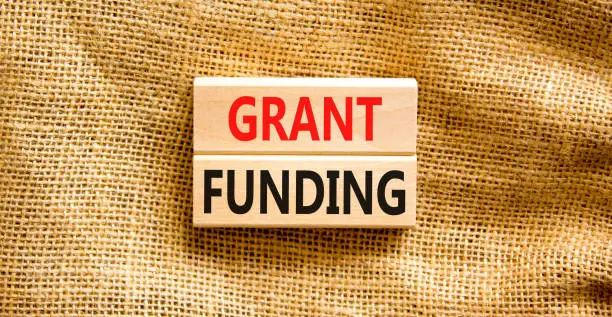Grants for science teachers are financial awards provided to educators, specifically those teaching science subjects, to enhance their teaching methods and classroom resources.
These grants aim to support innovative projects, professional development, and the integration of cutting-edge technologies in science education.
Teachers can apply for grants through various organizations, foundations, and government agencies that prioritize advancing science education. The funds can be used to purchase scientific equipment, educational materials, or even fund field trips, fostering a dynamic and hands-on learning experience for students.
These grants not only empower teachers to stay abreast of the latest advancements in their field but also contribute to creating a stimulating and engaging environment for students. By encouraging creativity and exploration, these initiatives ultimately inspire a new generation of scientists and thinkers, laying the foundation for a brighter future in science and technology.
The Importance of Grants for Science Teachers
1. Enhanced Learning Environments:
- Grants empower science teachers to create dynamic and interactive classrooms by funding the acquisition of state-of-the-art laboratory equipment, engaging teaching materials, and advanced technology tools.
- The availability of such resources transforms traditional lessons into immersive experiences, allowing students to explore scientific concepts hands-on, reinforcing their understanding.
2. Professional Development Opportunities:
- Many grants allocate funds for teachers’ professional development, enabling them to attend workshops, conferences, and training programs. This investment in educators directly translates to enriched classroom experiences for students.
- Continuous learning ensures that science teachers stay abreast of the latest educational methodologies, technological advancements, and scientific breakthroughs, fostering a culture of lifelong learning.
3. Innovation in Teaching Practices:
- Grants encourage teachers to experiment with innovative teaching strategies and approaches, breaking away from conventional methods. This freedom to innovate is essential in adapting to the diverse learning styles of students.
- Implementing new techniques, such as project-based learning or collaborative experiments, not only makes science more enjoyable for students but also cultivates critical thinking and problem-solving skills.
4. Equity and Inclusion:
- Grants contribute to narrowing the educational equity gap by providing resources to schools and teachers in underserved communities. This ensures that all students, regardless of their socioeconomic background, have access to high-quality science education.
- Inclusive science programs foster diversity in STEM fields, addressing the underrepresentation of certain demographics and encouraging a broader spectrum of students to pursue careers in science.
5. Community Engagement:
- Some grants encourage science teachers to develop outreach programs that extend beyond the classroom. This involvement in community projects not only enriches students’ learning experiences but also promotes science awareness and appreciation among the broader community.
- Science becomes a communal endeavor, sparking interest and curiosity not only in the classroom but also in the neighborhoods and communities where students live.
6. Preparation for Future Challenges:
- Grants enable science teachers to anticipate and prepare students for the challenges of the future. This may involve incorporating cutting-edge technologies, exploring emerging scientific fields, or addressing global issues such as climate change and sustainability.
- By staying ahead of the curve, science teachers equipped with grant-funded resources prepare their students to be adaptable, innovative, and ready to contribute to the ever-evolving world of science and technology.
Comprehensive List of Foundations Awarding Grants for Science Teachers
1. National Science Foundation (NSF):
- Focus: Supports a wide range of science, technology, engineering, and mathematics (STEM) initiatives.
- Grants: Offers grants for curriculum development, teacher training, and research projects that contribute to STEM education.
2. Toyota USA Foundation:
- Focus: Prioritizes innovative STEM programs with a focus on environmental science and conservation.
- Grants: Provides funding for teacher-led projects that promote hands-on, experiential learning.
3. American Honda Foundation:
- Focus: Emphasizes STEM education and career pathways, particularly in the fields of engineering and technology.
- Grants: Supports programs that engage students in STEM activities both in and outside the classroom.
4. ExxonMobil Educational Alliance Program:
- Focus: Aims to improve K-12 education in math and science.
- Grants: Offers funding for various educational projects, including professional development for science teachers.
5. Shell Oil Company:
- Focus: Supports STEM education initiatives, with an emphasis on energy-related topics.
- Grants: Funds projects that enhance STEM curricula and provide resources for hands-on learning experiences.
6. The Burroughs Wellcome Fund:
- Focus: Concentrates on advancing biomedical sciences and supporting STEM education.
- Grants: Offers funding for professional development, curriculum enhancement, and classroom resources for science teachers.
7. Amgen Foundation:
- Focus: Committed to advancing science education with a particular emphasis on biotechnology.
- Grants: Supports initiatives that enhance science literacy and provide students with exposure to cutting-edge biotechnology concepts.
8. Siemens Foundation:
- Focus: Aims to ignite and sustain students’ interest in STEM subjects.
- Grants: Provides support for professional development, STEM curriculum enhancement, and hands-on learning opportunities.
9. EPA Environmental Education Grants:
- Focus: Centers on environmental education, sustainability, and ecological awareness.
- Grants: Offers funding for projects that integrate environmental science into K-12 curricula.
10. The Bill & Melinda Gates Foundation:
- Focus: Addresses various global issues, including education reform and technology in the classroom.
- Grants: Supports projects that enhance educational practices, with potential opportunities for science teachers.
11. The Simons Foundation:
- Focus: Concentrates on advancing research in mathematics and the basic sciences.
- Grants: Supports initiatives that enhance mathematics and science education, with a focus on fostering curiosity and critical thinking.
12. Verizon Foundation:
- Focus: Emphasizes technology in education, including STEM-related programs.
- Grants: Provides funding for projects that integrate technology into science classrooms, promoting digital literacy and innovative teaching methods.
13. The Lemelson Foundation:
- Focus: Supports inventiveness and innovation, with a focus on inspiring young inventors.
- Grants: Funds programs that encourage hands-on, inventive learning experiences in science and engineering.
14. National Geographic Education Foundation:
- Focus: Promotes geographic literacy and an understanding of the world.
- Grants: Supports projects that integrate geography and earth sciences into the curriculum, fostering a global perspective.
15. The Noyce Foundation:
- Focus: Committed to improving mathematics and science education at the K-12 level.
- Grants: Provides funding for projects that enhance the recruitment and training of effective STEM educators.
16. The W.K. Kellogg Foundation:
- Focus: Addresses a variety of educational issues, including STEM education and community engagement.
- Grants: Supports initiatives that create equitable and inclusive STEM learning opportunities for students.
17. The Math for America (MƒA) Foundation:
- Focus: Aims to elevate mathematics teaching and promote excellence in the field.
- Grants: Provides fellowships and funding for professional development opportunities for math and science educators.
18. The Society for Science & the Public:
- Focus: Encourages scientific research and education, particularly for underrepresented students.
- Grants: Supports projects that promote science literacy, research skills, and science fair participation.
19. The Chan Zuckerberg Initiative:
- Focus: Addresses a variety of global challenges, including education reform and technology integration.
- Grants: Supports projects that leverage technology to enhance science education and promote personalized learning.
20. The American Chemical Society – Hach High School Chemistry Classroom Grants:
- Focus: Specific to chemistry education, providing support for high school classrooms.
- Grants: Offers funding for innovative projects, equipment, and resources that enhance the teaching of chemistry.
How to Apply for Grants for Science Teachers
1. Research Grant Opportunities:
- Engagement Tip: Treat the search for grants like a scientific inquiry. Dive into reputable websites, explore education-focused foundations, and join professional networks to stay informed about available opportunities.
2. Understand Grant Criteria:
- Engagement Tip: Think of each grant as a unique experiment. Carefully read through eligibility criteria, project requirements, and objectives. Align your proposal with the grant’s specific goals to increase your chances of success.
3. Craft a Compelling Proposal:
- Engagement Tip: Your proposal is your experiment plan. Clearly articulate the need for funding, outline your project’s objectives, and explain how it will impact students’ learning experiences. Use engaging language to captivate reviewers’ attention.
4. Highlight Innovation and Impact:
- Engagement Tip: Imagine your proposal as a story. Emphasize innovative teaching methods, hands-on experiences, and the potential impact on students. Paint a vivid picture of how the grant will spark curiosity and foster a love for science.
5. Budget Strategically:
- Engagement Tip: Create a budget that mirrors your project’s objectives. Be transparent and detailed about how funds will be utilized. Consider using visuals, like infographics or charts, to make your budget more accessible and visually appealing.
6. Provide Evidence of Need:
- Engagement Tip: Back your proposal with data and anecdotes. Demonstrate a clear understanding of your students’ needs and how the grant will address educational gaps. Personalize the narrative with stories that showcase the challenges and potential breakthroughs.
7. Collaborate and Network:
- Engagement Tip: Collaboration is like forming a scientific partnership. Connect with other educators, administrators, and professionals. Showcase how your project aligns with broader educational goals and involves a network of support.
8. Professional Development Plans:
- Engagement Tip: Treat yourself as an evolving scientist. Outline how the grant will contribute to your professional growth. Share your commitment to continuous learning and how it will directly benefit your students.
9. Seek Feedback:
- Engagement Tip: Just as in science, peer review is crucial. Share your proposal with colleagues or mentors to gather constructive feedback. Use this input to refine your narrative and address any potential concerns.
10. Submit a Polished Application:
- Engagement Tip: Your application is like a polished experiment report. Ensure it is well-organized, free of errors, and visually appealing. Make it easy for reviewers to understand the essence of your project and its potential impact.
11. Follow Up:
- Engagement Tip: After submitting your application, think of it as waiting for experimental results. Follow up with the granting organization if guidelines permit. Show continued enthusiasm and commitment to your proposed project.
12. Celebrate and Share Success:
- Engagement Tip: When awarded a grant, celebrate like a successful experiment! Share the news with your school community, showcase the potential impact, and express gratitude to the granting organization. It’s not just a win for you; it’s a win for science education.
Tips for Writing a Successful Grants for science teachers
1. Understand the Granting Organization:
- Engagement Tip: Treat the granting organization as your target audience. Research their mission, values, and previous grant recipients. Tailor your proposal to align with their goals, showing that you’ve done your homework.
2. Clearly Define Your Project Objectives:
- Engagement Tip: Think of your project objectives as the nucleus of your proposal. Clearly define what you aim to achieve and how it will benefit students. Use vivid language to create a mental picture for reviewers, making your goals memorable.
3. Tell a Compelling Story:
- Engagement Tip: Weave a narrative that captivates readers. Share anecdotes, examples, or personal experiences that highlight the challenges your students face and how the grant will be the catalyst for positive change.
4. Highlight Innovation and Creativity:
- Engagement Tip: Imagine your proposal as a scientific breakthrough. Emphasize innovative teaching methods, unique projects, or creative approaches that set your proposal apart. Capture the imagination of reviewers with ideas that spark curiosity.
5. Connect Your Proposal to Student Impact:
- Engagement Tip: Make the connection between your project and student outcomes explicit. Illustrate how the grant will enhance students’ understanding, engagement, and long-term interest in science. Paint a picture of the lasting impact on their educational journey.
6. Address Educational Gaps:
- Engagement Tip: Treat educational gaps as scientific challenges. Clearly identify the existing shortcomings in your current science education setup and demonstrate how the grant will fill these gaps, ensuring a more comprehensive and enriching learning experience.
7. Demonstrate Collaboration and Community Involvement:
- Engagement Tip: Collaborate like scientists working on a shared experiment. Showcase partnerships with other educators, involvement of community members, or collaboration with local organizations. Highlight how your project extends beyond the classroom, benefiting the broader community.
8. Showcase Your Expertise and Passion:
- Engagement Tip: Your passion for science is the fuel for your proposal. Share your enthusiasm for the subject and your commitment to students’ success. Let reviewers feel your dedication to creating an inspiring and dynamic learning environment.
9. Use Visuals Strategically:
- Engagement Tip: Think of visuals as your experiment results. Incorporate charts, graphs, images, or infographics to visually represent your project, budget, or expected outcomes. Make your proposal visually appealing and easy to comprehend.
10. Be Transparent with Budgeting:
- Engagement Tip: Your budget is like a scientific equation. Clearly outline how funds will be allocated, and justify each expense. Use straightforward language and avoid jargon, ensuring that reviewers easily understand your financial plan.
11. Demonstrate Sustainability:
- Engagement Tip: Showcase how your project will have a lasting impact. Outline plans for sustainability beyond the grant period, illustrating how your initiative will continue to benefit students and the community in the long run.
12. Seek Feedback Before Submission:
- Engagement Tip: Peer review is like a scientific review process. Share your proposal with colleagues, mentors, or even students to gather feedback. Use constructive input to refine your writing and strengthen your application.
13. Craft a Compelling Conclusion:
- Engagement Tip: Your conclusion is like the conclusion of an experiment. Summarize key points, reiterate the importance of your project, and leave a lasting impression. End with a call to action, expressing gratitude and enthusiasm for the potential collaboration.




